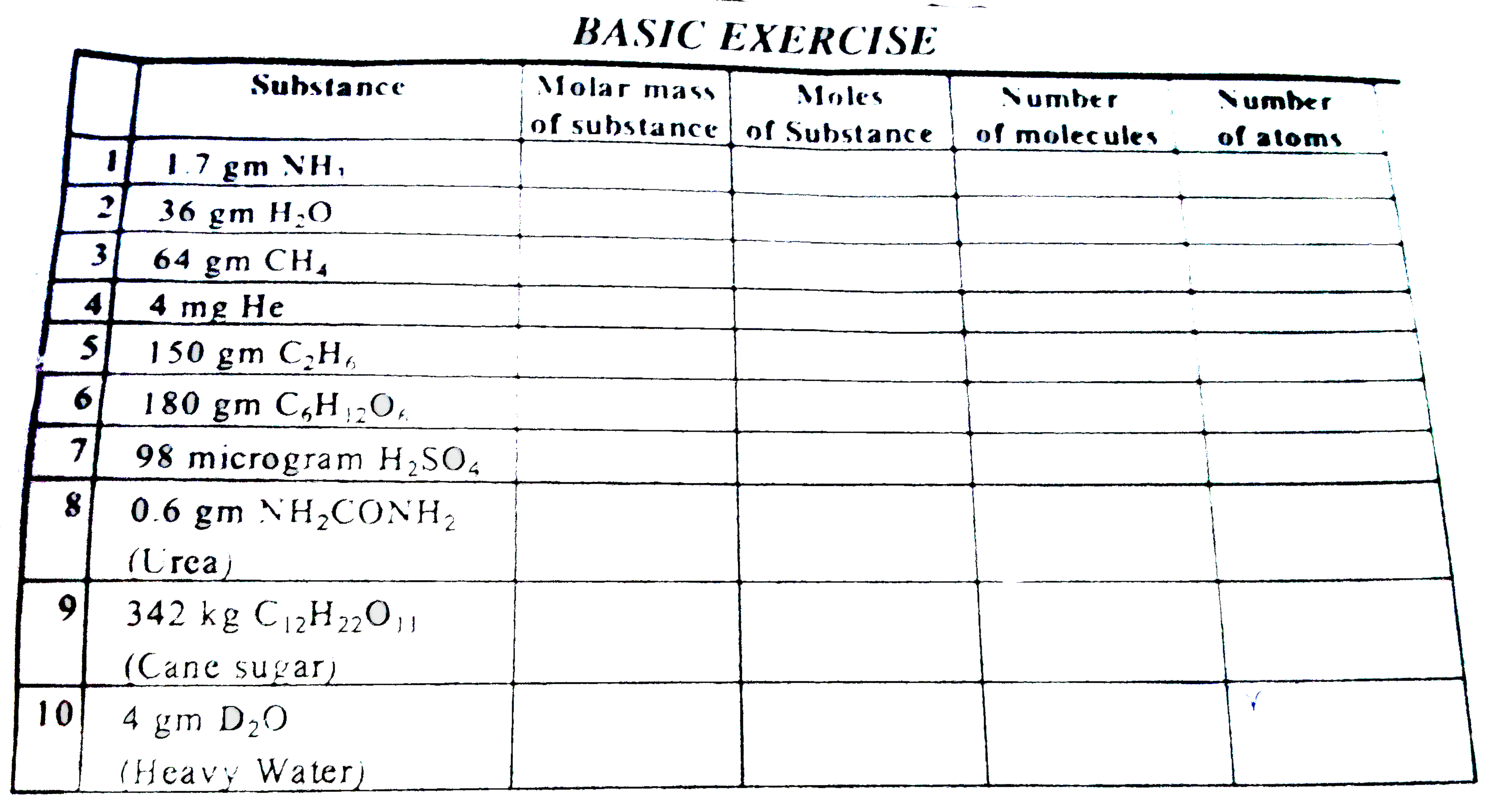Statement-1: 2A+3B→C
4/3 moles of 'C' are always produced when 3 moles of 'A' & 4 moles of 'B' are added.
Statement-2: 'B'is the limiting reactant for the given data.
Statement-1 is true, statement-2 is true and statement-2 is correct explanation for statement-1.
Statement-1 is true, statement-2 is true and statement-2 is NOT the correct explanation for statement-1
Statement-1 is false, statement -2 is true.
Statement -1 is true, statement-2 is false.
The correct Answer is:C
Topper's Solved these Questions
- MOLE CONCEPTBOOK - ALLENCHAPTER - MOLE CONCEPTEXERCISE - O-II (Multiple concept
6 Videos
- MOLE CONCEPTBOOK - ALLENCHAPTER - MOLE CONCEPTEXERCISE - O-II (Match the column:)
3 Videos
- MOLE CONCEPTBOOK - ALLENCHAPTER - MOLE CONCEPTEXERCISE - O-II
14 Videos
- METALLURGYBOOK - ALLENCHAPTER - METALLURGYEXERCISE - EXERCISE-05 [B]
26 Videos
- p-Block Element BOOK - ALLENCHAPTER - p-Block Element EXERCISE - All Questions
20 Videos
Similar Questions
Knowledge Check
Statement-1 : 2 moles of BaCl2 react with 3 moles of Na3PO4 to form 0.66 mole of Ba3(PO4)2
Statement-2 : BaCl2 is the limiting reactant and some Na3PO4 remains unreacted.AStatement 1 is true, statement 2 is also true , statement 2 is the correct explanation of statement 1.BStatement 1 is true, statement 2 is also true , statement 2 is not the correct explanation of statement 1CStatement 1 is true, statement 2 is falseDStatement 1 is fale, statement 2 is true14 moles of A and 20 moles of B, 8 moles of C is formed in the following reaction 3A+4B→2C then.
A8 mole of B reactB10 mole of A reactC4 mole of B leftD8 mole of A left.The number of moles of C and D produced on mixing 5 moles of A and 7 moles of B are respectively:
(3A+5B⇒7C+9D)A9 moles and 11 molesB11.66 moles and 15 molesC9.8 moles and 12.6 molesD1 mole and 13 moles

A→2B+C
3B→2D
Find moles of D produced if initially 3 moles of A are taken.
View Solution
A→2B+C
3B→2D
Find moles of D produced if initially 3 moles of A are taken.
View Solution14 moles of A and 20 moles of B, 8 moles of C is formed in the following reaction 3A+4B→2C then.
View SolutionFor the reaction :
7A+13B+15C⇒17P
If 15 moles of A, 26 moles of B and 30.5 moles of C are taken
initially, then limiting reactant is:
View SolutionFor the reaction :
7A+13B+15C⇒17P
If 15 moles of A, 26 moles of B and 30.5 moles of C are taken initially, then limiting reactant is:
View Solution
